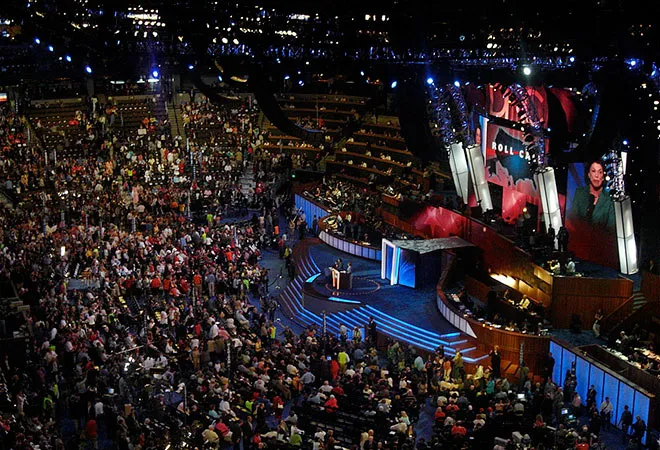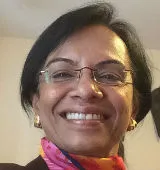-
CENTRES
Progammes & Centres
Location

Early contenders for the Democratic Party’s nomination for the 2020 presidential race are the most diverse in US political history, reflecting the changing demographics and power equations of a party in ferment.
Nine have declared their candidacy thus far, including four women one of whom is of Indian and Jamaican parentage, an openly gay small town mayor, a Taiwanese American and a Hiic American. More are likely to join in the coming months and the field could swell to more than 20.
Seven of the nine are non-white, women or identify as LGBT – a radical slate against the Republican Party’s mostly white base. Three women senators -- Kamala Harris, Elizabeth Warren, Kirsten Gillibrand -- and a Congresswoman, Tulsi Gabbard, a practicing Hindu, are in the fray. Pete Buttigieg, the first openly gay politician to join the 2020 race, is a millennial.
But diversity alone will not get a Democrat to the White House. The battle in the primaries will be intense as Democrats decide which candidate is best suited to defeat Donald Trump before they crown him or her as their nominee at the Democratic Party convention next year.
No one should be surprised if that person turns out to be male and white – former vice president Joe Biden is said to be seriously considering a run as is Beto O’Rourke, a former Texas Congressman whose failed campaign for the US Senate during the midterms caught fire and excited the Democratic base.
Both Biden and O’Rourke have polled well even though they haven’t declared but so has Harris, whose town hall on CNN drew nearly 2 million viewers this week.
While it’s too early to say who will survive the grueling primaries to claim the nomination, it is more than clear that the candidate will have to appeal to various constituencies within the party and find the magic middle while keeping enthusiasm high and hubris low.
The Democratic Party is being pulled in opposite directions by the centrists who want to stay on the right side of donors and issues and the leftists led by the new superstar Alexandria Ocasio-Cortez who want to define the party as a truly opposition party with clear views on income inequality, healthcare, taxes and education.
Ocasio-Cortez is savvy on social media and describes herself as a Democratic socialist. Her victory last summer over incumbent Joseph Crowley in the primary, which ultimately led her to the House of Representatives in the midterms, is the starkest example of the leftist shift in the Democratic Party.
Crowley, a former co-chair of the India Caucus, was all set to go up the party hierarchy in the House when the lightning bolt hit and he lost to the 29-year-old Ocasio-Cortez.
AOC, as she is known by her fans, and other newly minted members of the House are challenging the party leadership on a daily basis in the realm of ideas and party processes.
The era of the Clintons, defined by Hollywood and Wall Street money, is well and truly over. In just two years since Trump’s election, the Democratic Party candidates are all talking higher taxes for the rich and Medicare for all. In fact, Hillary Clinton’s manifesto would not pass muster with any Democratic hopeful.
Socialism is no longer a bad word in the lexicon of the young. As the White House Council of Economic Advisers noted last October, socialism is making a comeback in “American political discourse,” coinciding with the 200thbirth anniversary of Karl Marx.
Centrist Democrats are just as worried about this embrace of socialist ideas among the young as the Republicans are because it could force changes in way the political process works.
There is no denying the energy and commitment is coming from the party’s left flank for new ideas -- first credibly articulated by Bernie Sanders in the 2016 election. The party is going back to its activist roots of the mid-20thcentury with a partisan agenda that clearly distinguishes it from the Republicans.
Some establishment Democrats worry their party is developing its own “extreme” wing like the Tea Party of the Republicans, which pulled Republican Party sharply to the right.
All Democrats want to defeat Trump and get to the White House but the strongest opposition to the current president seems to be coming from the left-leaning factions. The percentage of Democrats who identify as liberal has gone up from 28% a decade ago to 46% last year, according to a Pew survey.
Democratic voters have moved left on almost all issues – from immigration to race to economics. In 1994, just 32% thought immigrants strengthened the country but today the figure is 84%. Similarly, on racism, in 2009 57% thought the government should do more to fight the scourge but the figure is 81% today.
Some of the biggest causes of the shift in thinking on economic issues include the rise in income inequality, the 2008 financial crash and the resulting recession.
But the biggest reason might be Trump’s election, which woke the Democrats to ideas once dismissed as pipe dreams. It certainly energized the young and the left, especially in big cities. Their support would be crucial for whoever wins the Democratic Party nomination.
The views expressed above belong to the author(s). ORF research and analyses now available on Telegram! Click here to access our curated content — blogs, longforms and interviews.

Seema Sirohi is a columnist based in Washington DC. She writes on US foreign policy in relation to South Asia. Seema has worked with several ...
Read More +